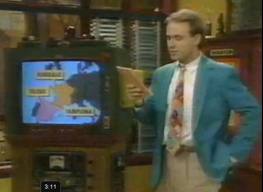
This is what it looks like, if you aren't familiar. Lawson said that “Carmen Sandiego,” with its game-show format and fast pace, was an example of how public television could borrow from its commercial counterpart without giving up integrity.Before we talk about Where in the World is Carmen Sandiego?, let's talk about the 20-yard shuttle run. “We need to reach out to older children, as well as adults.” “Our intention is to have public television reach a new generation of viewers,” Lawson said. Blumenthal, whose father produced the old “Concentration” game show for NBC, has a history of producing and consulting on network game shows.Īnd the program’s bold positioning in a time slot unfamiliar to PBS’ typical viewers and its orientation toward a post-"Sesame Street” audience group reflect Lawson’s promise to aggressively seek new adherents. With Blumenthal at the producing helm, the program is one of the first to be produced under Lawson’s plan to draw on the resources of commercial television to add spice to public-TV shows. “Carmen Sandiego” exemplifies several trends in public television under the guidance of PBS programming chief Jennifer Lawson. “It’s not different than if we based a program on a book,” Rayvid said.

#Where in the world is carmen sandiego host software#
Rayvid said that officials at PBS did not consider Broderbund’s cooperation to pose a conflict of interest under the government-funded network’s underwriting guidelines, because the software company did not contribute money. “Kids use (the computer game) in school and at home.” “ ‘Carmen Sandiego’ is a pre-sold concept, which is very important in public television, because we don’t have an advertising budget,” Rayvid said. Broderbund Software, which receives a credit on the program as the developer of the game on which the show is based, did not donate cash, but did allow PBS to use the name and concept for free.Īnd that, according to Rayvid, was a very significant contribution. The remainder of the project’s funding came from PBS and the Corporation for Public Broadcasting, which together donated $3.1 million. But that still leaves the program short another $750,000, which Rayvid said the producers need to improve the graphics and animation used on “Carmen,” and to develop its second season.

donated $750,000 to the program, which will be used for promotion.

PBS is relying on the prime-time splash to promote the show because, until two weeks ago, the network did not have funding for a promotional budget for the series, according to executives involved.Įarlier this month, Toyota Motor Corp. slot, but also at 8 p.m., when KCET and KPBS will show two half-hour episodes. Tonight, “Carmen Sandiego” will be broadcast not only in its regular 5 p.m. But the facts-in the form of puzzles and clues-are slipped in, and are surrounded by music, skits and hype. The idea, according to Blumenthal and others involved with the show, is to create an atmosphere of enthusiasm for geography, while not making the show explicitly instructional.Īccording to Jay Rayvid, co-executive producer and senior vice president of WQED, each program contains about 70 pieces of geographical information, a subject about which most American children know very little.

“We intentionally designed the show to have a really fast pace, (which) that age group is accustomed to from watching MTV.” “We have a lot of comedy, animation and silliness, which we felt was essential to be able to compete,” said senior producer Howard Blumenthal.


 0 kommentar(er)
0 kommentar(er)
